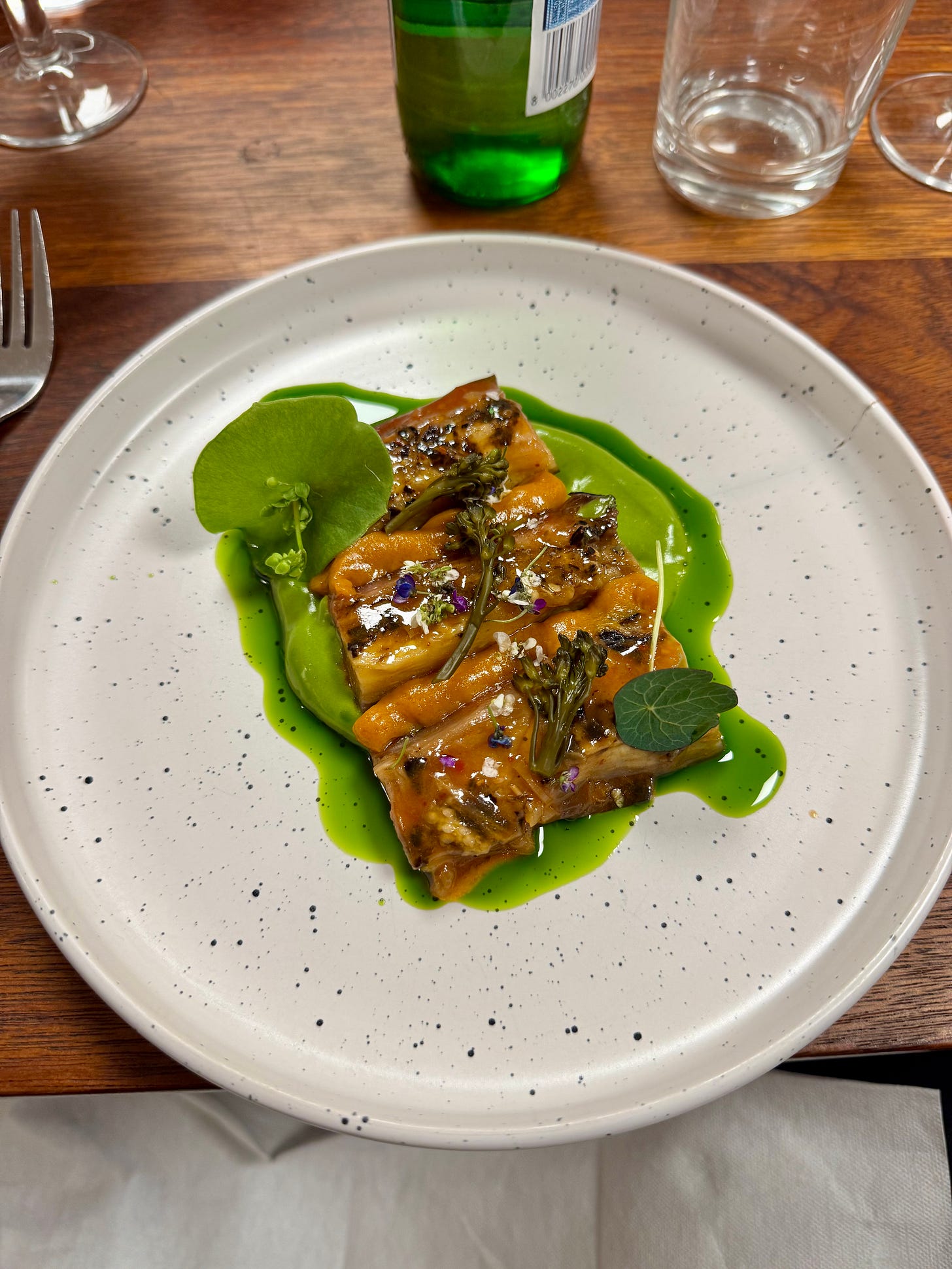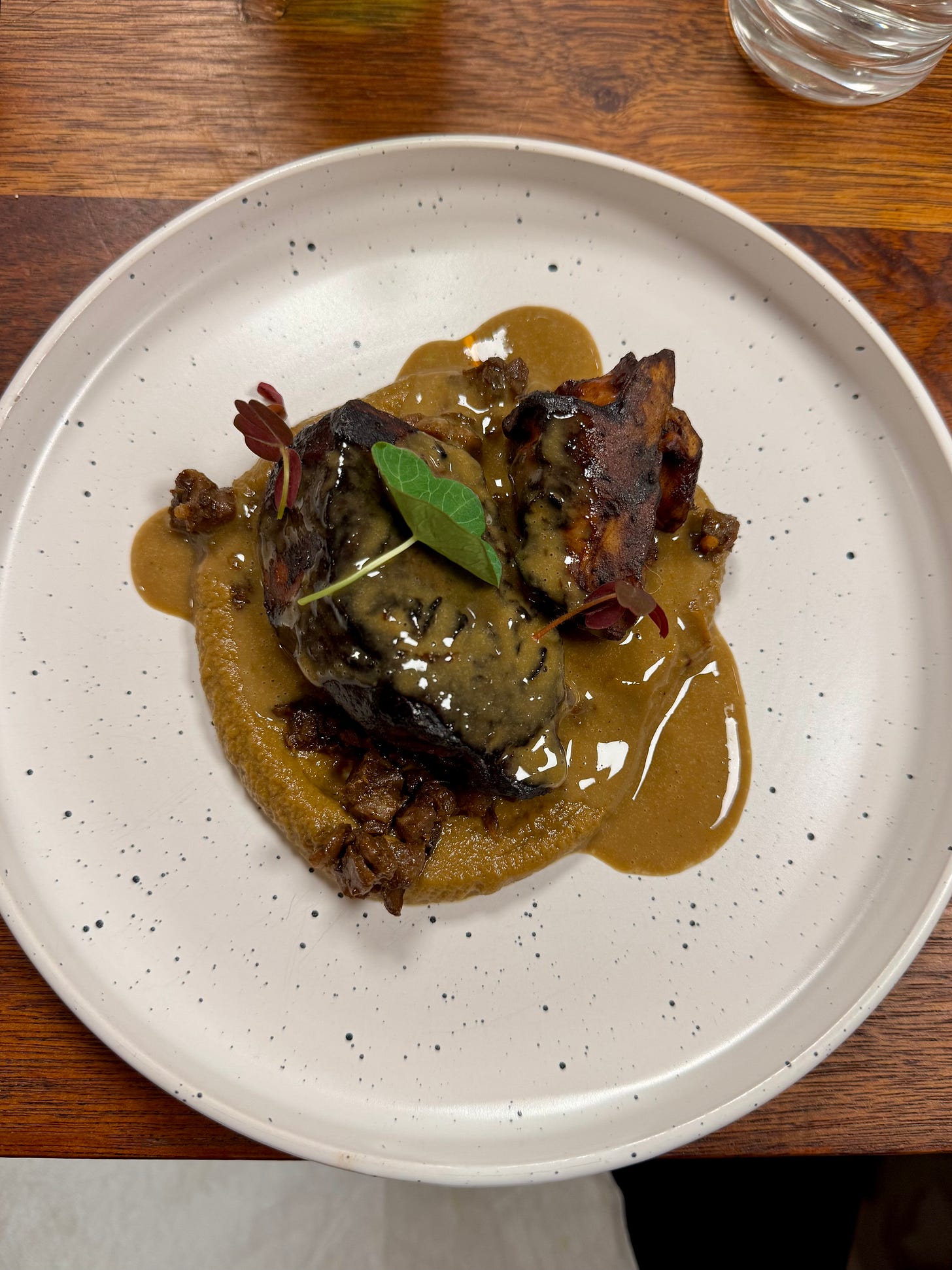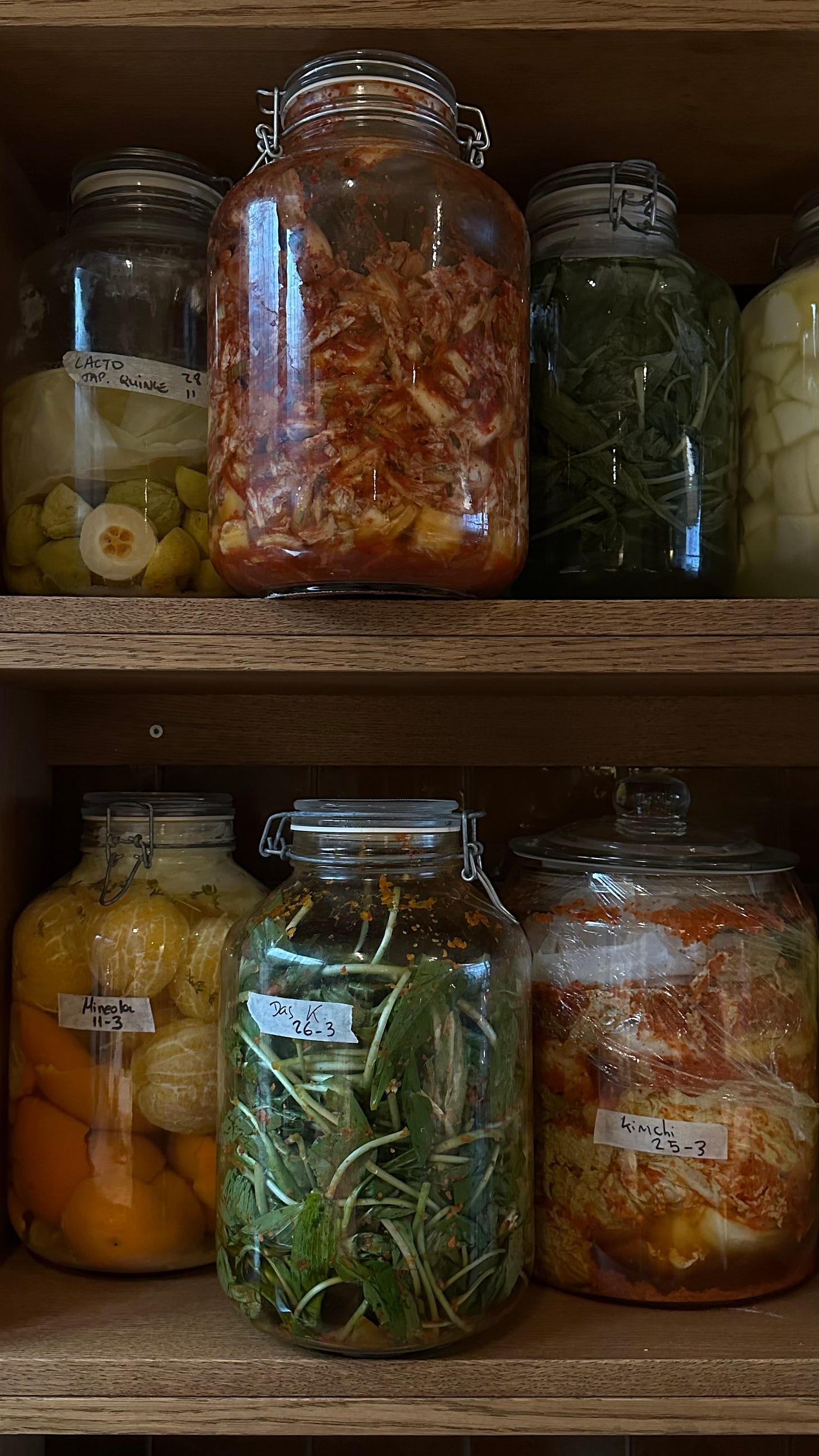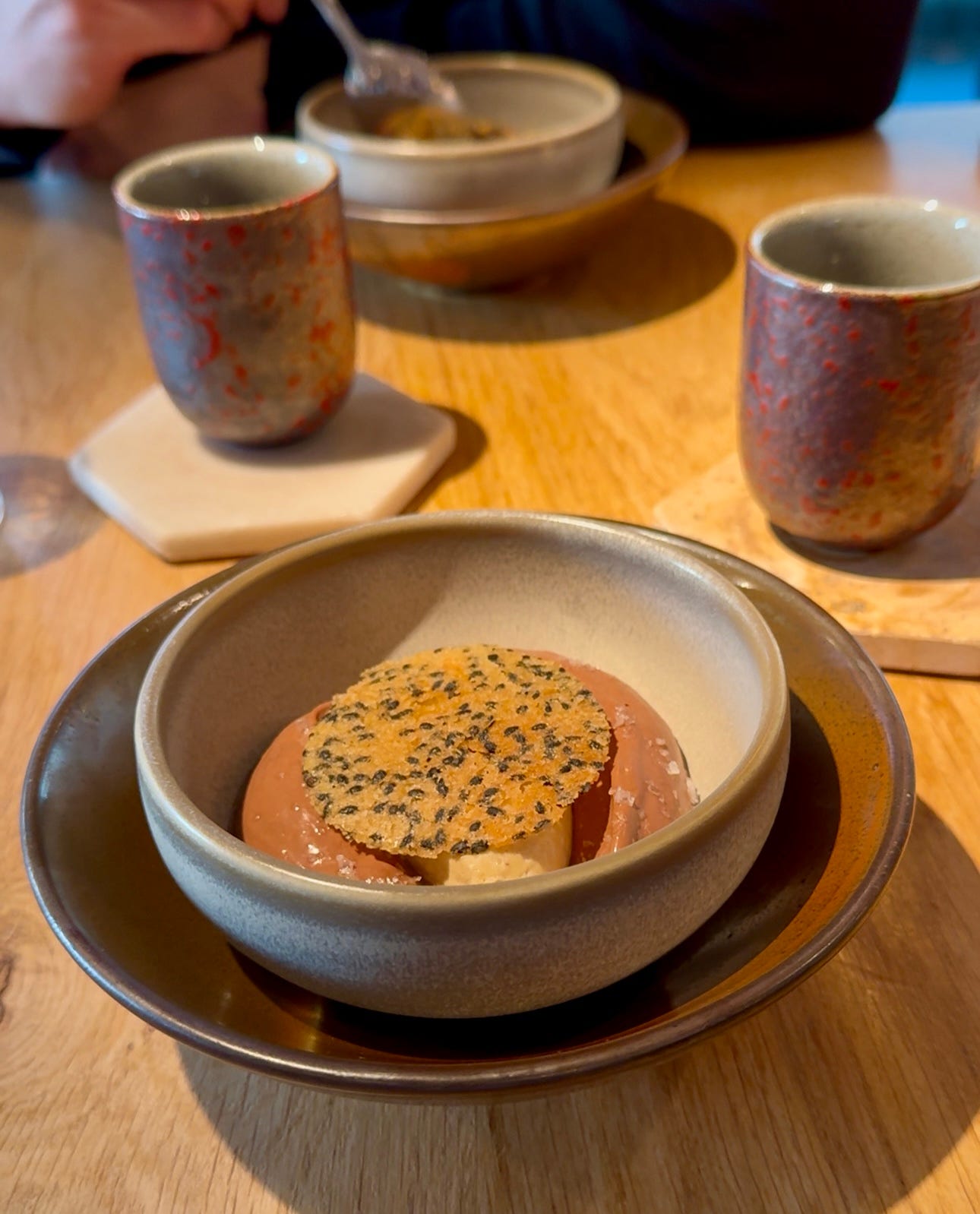Amsterdam's bubbling fermentation scene.
Fermentation is both forward-looking and rooted in the past. It's a fight against the system, and a delicious one at that...
In my time, I’ve witnessed a fair few food trends. Some, thankfully, were short-lived, like kale salads that tasted monstrously of cardboard. Others are on their way out but awkwardly don’t know it yet, like crudo (sorry, crudo, but I’m beginning to feel nothing when I see you on a menu). Some trends refuse to die no matter what, like small plates.
No trend feels quite as monumental – and justified – as fermentation. I’m very sure it’s here to stay. The benefits of lacto-fermentation, where good bacteria convert sugars into lactic acid, creating sourness, should be clear by now. Rich in probiotics. Enlivening for guts. Anti-inflammatory. Anti-cancer. These benefits feel immediate to me: when I eat kapusta kwaszona– oh, fine, ‘sauerkraut’ – I immediately feel a rush, which might be down to the increased production of mood-boosting neurotransmitters. Or, I’m simply a happy boy when eating good things.
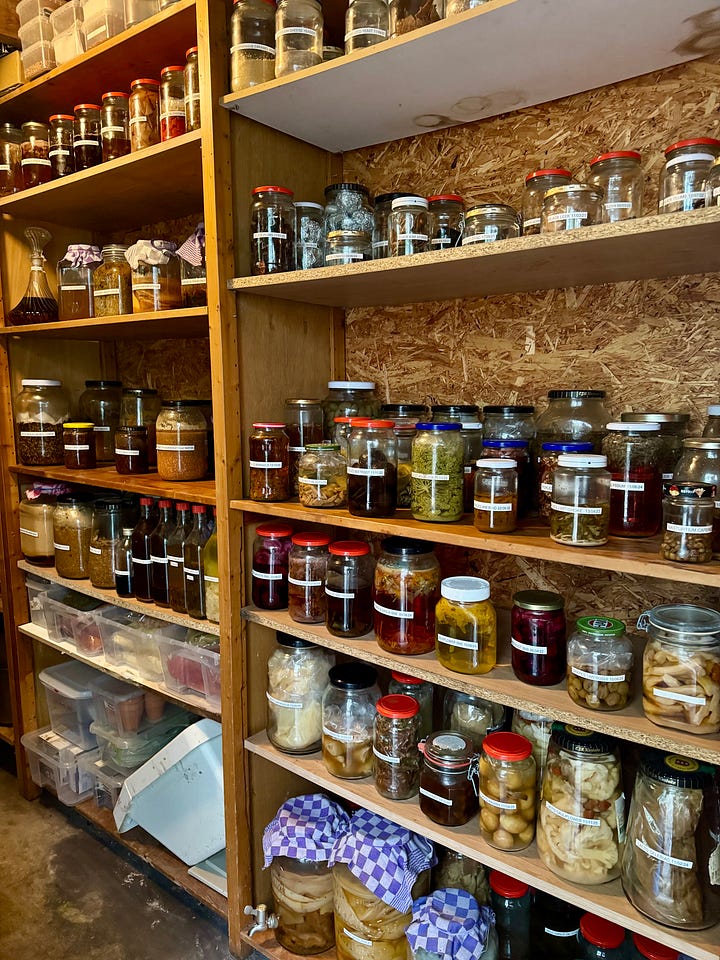

Health alone can’t explain the (sometimes literal) explosion of fermentation. In the Amsterdam culinary scene, two chefs are taking this art to the next level. Listening to them talk is inspiring. The first is Andreas Chrysomallis, a zero-waste chef who runs pop-ups serving artful plates of fermented foods. To put it lightly, Andreas is obsessed with fermentation. In a shed in his garden, he has close to 250 jars of ferments. It’s an incredible space, immaculately organised and peaceful. There’s a mystical feel: the jars watch me, as if they might be sentient. Some are years old. Andreas has done everything you can do in the fermentation world, even made his own koji, a rice ferment made with a fungus called Aspergillus oryzae. Koji is then used to create other ferments such as soy sauce, miso and sake.
“I think one of the most interesting things about fermentation is that it’s alive. It can always change. It gives you a new perspective on food because it’s not like a cake, where you bake at the same temperature every time and get the same thing,” he says. Variability is inherent: no two jars taste the same, and that’s down to the varying strains of bacteria that arise, the length of fermentation time, the ambient storage temperature, and so much more. As a cooking method, it’s highly individualistic and autonomous. It’s self-reliant. It’s all the things we’re taught we should be. No wonder it’s popular. But it’s also a symbiotic cooking method, which is what I loved about sourdough baking. You work with a live culture that has its own life (rising/falling), likes (ambient temperatures), dislikes (too hot, too cold, too much change). To achieve consistency, you must respect the starter.
What I thought most impressive about Andreas’ supper club, which he runs seasonally, was the sheer amount of fermentation on each plate. The stand out dish was his aubergine starter, which came with lacto-fermented tomato, tom yam glaze and bimi, as well as a wild garlic emulsion and edible leaves. It was exceptionally sophisticated and could have come straight out of a Michelin-starred kitchen. It’s no surprise to me that Andreas trained at Noma. I was shocked to learn that some dishes used over 25 ferments. How do you recipe develop something like that when every batch of ferment is different?
“You take different ferments and put them together and try to fix a puzzle. Nothing is set. The menu couldn’t be more creative.” For Andreas, the key is in achieving balance. Fermentation can produce incredibly intense flavours, evidenced by his main course at the supper club, a hen-of-the-wood dish that may have been one of the most heightened, perhaps even challenging, things I’d ever eaten. It was intensely sour, intensely savoury, like eating a thunderstorm. This is what I love about fermentation: it creates wild, unknown flavours, a kind of quantum physics of taste.
Andreas’ cooking is avant-garde but fermentation’s roots are historically far-reaching. Before the era of refrigeration, cold winters limited the availability of fresh produce, meaning fermentation was used to lock nutrients in for winter. In some cultures, such as Korean, these processes became culturally cherished. In the west, we simply gave up, and it’s only now that we’re rediscovering this lost art.
“When I started seven, eight years ago, ‘kimchi’ was an unknown word,” Andreas says. Things have changed. We have all, in recent years, dabbled with fermentation, wondering whether we’ve moulded something delicious into existence or given ourselves botulism. I went through a kimchi phase in the early 2020s when lockdown forced us to find new hobbies. The kimchi that scented my fridge, then kitchen and finally my entire home was a million miles better than mass-produced versions, which are translucent and vinegary and at times, god forbid, tomatoey in taste. We still ferment a batch of kimchi every winter, making a day of it, rubbing salt into the curls of cabbage, bloodying our fingers with gochugaru.
For me, fermentation’s rise is also to do with what it’s pushing against. It’s a form of resistance, disruptive of capitalist food systems, the wrestling back of control over products that are usually mass produced – miso paste, yoghurt, bread – and making them better at a quarter price. It costs little more than the fruit or vegetable, some salt and a mason jar (as a storage method, mason jars are also a dying trend, sorry). When supermarkets do try to emulate this, they fail. Much of what is replicated en masse in a factory is pasteurised, which kills so much of the goodness inside.
Food writer Michael Pollen once said that the trick to eating well is to only eat what your grandmother would recognise as food. Protein bars, microwaveable pizzas – my own babcia would have grimaced at these. For her generation, fermentation was literal survival. These days, survival is rarely an issue, and in Amsterdam, fermentation has become something of statement. This is especially true of Uncommon Bar, the bakery and restaurant on Bilderdijkstraat that sits opposite its sister, Uncommon Café. The space is beautiful and high-ceilinged and has a central, marble island that showcases minutely detailed pastries. In the evening, it becomes a dinner spot. I’m consistently blown away by the quality of their dinners – it should be an incredibly popular spot.
Uncommon Bar’s use of foraging and fermentation gives their food depth – not only in flavour, but in purpose too. I speak to Mat, the head chef, about why he’s so keen on these methods. He answers bluntly: “I don’t believe in the world’s food structure. Supermarkets have killed seasonality.” You’d be hard-pressed to argue with that. We can buy berries in winter, squashes in spring. It’s diabolical but it’s also not, it’s become completely unremarkable that bell peppers are available year round. Sure, some products stay hyper-seasonal, like asparagus, but I can’t help but think they’ve become token, allowing us to ignore how out of sync we’ve become.
The menu is so seasonal it changes weekly. The pastries are inventive, a croissant spiral I eat comes with fermented tomatoes, which are full of tang. It’s a bracing morning treat. A recent gazpacho was a huge hit: all the ingredients were fermented together in a single jar. How cool! Butter comes beaten with ferments. Bolognese is made of kimchi (an autumnal offering but truly outstanding). Vegetables are shown at their best because fermentation creates extravagant flavours without the use of animal products like wagyu fat or shrimp.
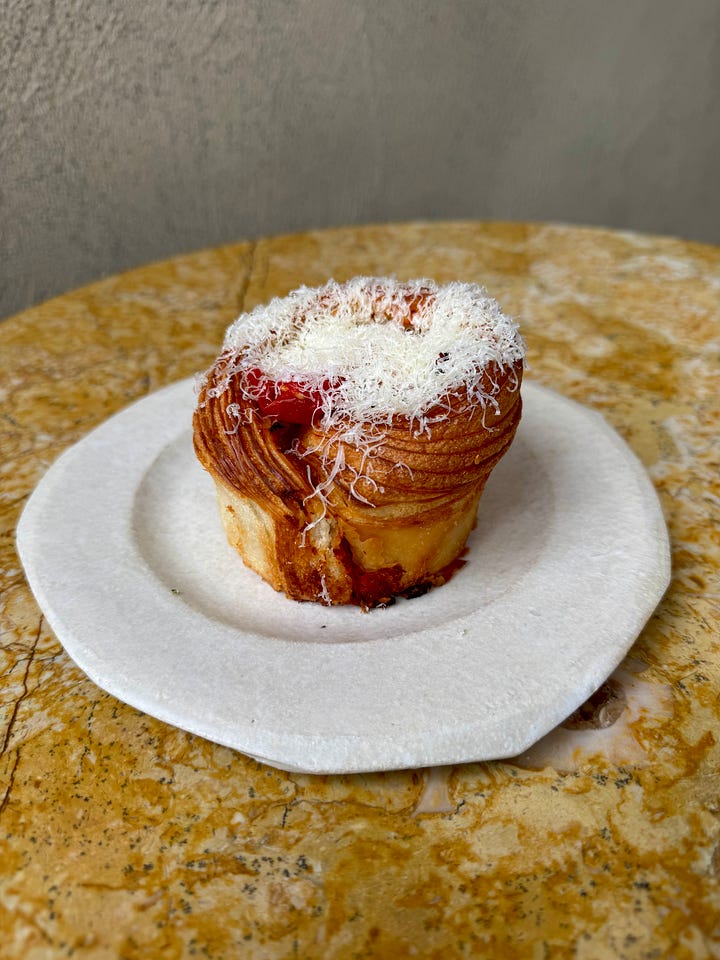
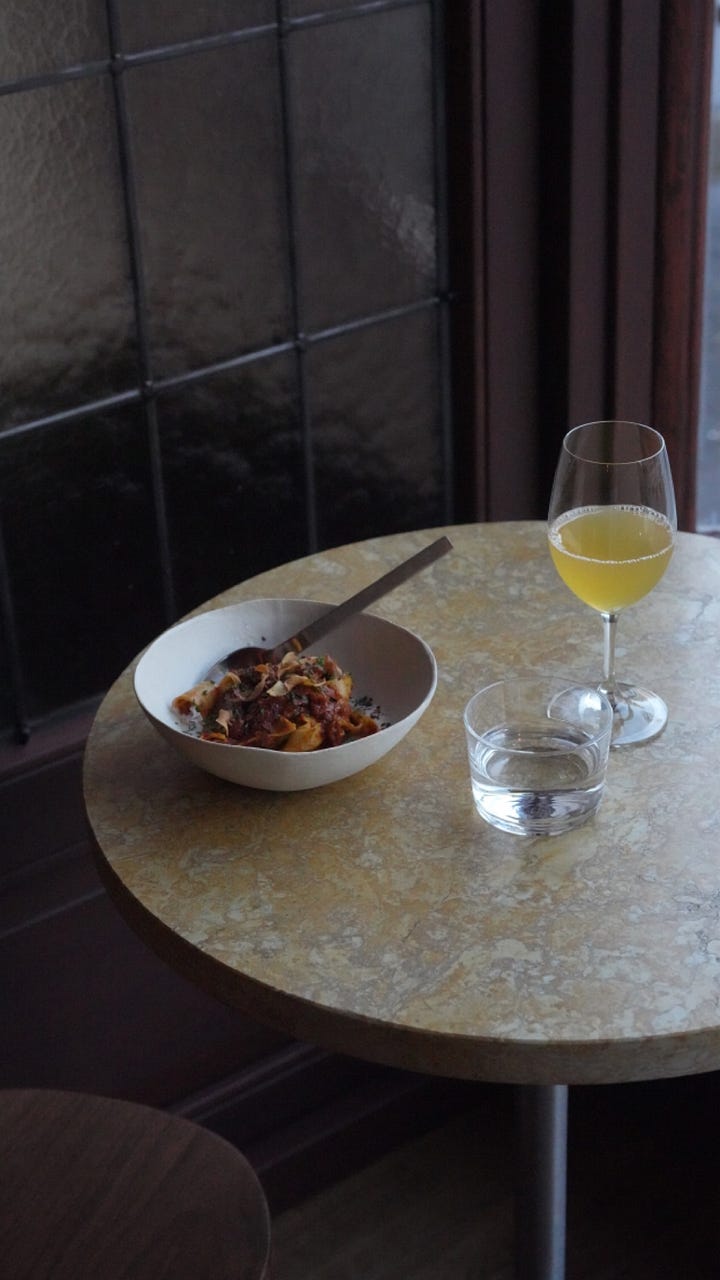
For some, a kimchi Bolognese might seem strange but to me, it tasted… right. “60-100 years ago, people were doing long-term food storage. It’s been missing since then,” Mat says. Uncommon’s dishes, and so many of the ferments we now regularly eat, taste like a return to something, a way of cooking rooted in nature and time. But time is not always your friend: a recent sea kale ferment Mat made had no redeeming qualities on opening. The process is simply different, he explains. “Most classically trained chefs have to pivot their way of thinking. You taste your ferment and work backwards – what would this go well with?” This is entirely different to, say, buying a chunk of meat and wondering what to do with it. It turns recipe development on its head.
What I might love most about fermentation is that’s revolutionised no-and-low menus. Uncommon Bar once served me a kombucha that tasted like Fizzy Peaches, a classic candy from the UK. Restaurants like Choux create deep brews of beets and coffee. These glasses are more complex than a late-stage Tetris game.
At a recent meal at Nazka, the fine-dining restaurant in de Pijp, I opted for the botanical pairing with my excellent four-course menu. The drinks that came out were intelligent surprises – a charcoal-fired romaine lettuce drink, a hard sell on paper, was complex and refreshing – but the star of the show was the lacto-fermented maitake mushroom drink, called ‘Depths.’ A fitting name: it tasted like the richest hot chocolate, yet somehow ancient too, like a 3000BC artefact dug up from the earth. As a compliment to the dessert, a Peruvian chocolate cremeux, it worked exceptionally well, lubricating the dish with its silkiness, undercutting the sweetness with its low-punch flavour.
Ah, but this is the beauty of fermentation: its endless depths gives rise to fabulous heights. It’s evolving and exciting, and we should all be seeking it out like gold.
OK BYE!
To get the most out of Smaak and to support my writing, please consider becoming a paid subscriber. You’ll get access to paywalled articles and The Index, a list of all my top recommendations. Thank you so much!




